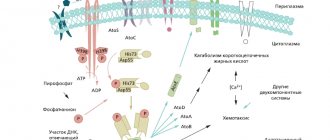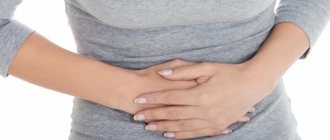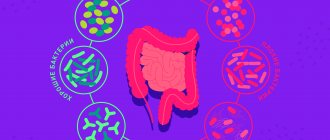Excessive accumulation of gases in the intestines causes flatulence. This condition puts a person in an awkward position, causes discomfort and is a sign of a disease of the digestive system. It is known that food products provoke this process. Gas-forming products are found in the daily diet of any person. To avoid flatulence, you need to know which foods to avoid or reduce their dose.
Legumes
Photo by Shelley Pauls / Unsplash
Beans, lentils, chickpeas, peas and other legumes contain galacto-oligosaccharides (GOS) and fructans - dietary fibers that the human body cannot break down on its own. But intestinal bacteria do an excellent job of this task and love these foods very much, but in the process of breaking them down they release gases.
The intensity of gas formation varies from person to person and depends on the bacteria: some people produce more gases than others. If you suddenly add a lot of plant fibers, including legumes, to your diet, gas formation increases, but with regular consumption of these products, this side effect is reduced. Because of this, switching to veganism or vegetarianism is associated with increased gas formation.
Everything you need to know about fiber
People with irritable bowel syndrome (IBS) are more susceptible to discomfort caused by gas, so some nutritionists recommend eating a diet low in GOS and fructans, including legumes.
If your diet contains almost no legumes, you should introduce them gradually. To start, you can add some lentils or a few beans to a salad, or spread some hummus on a sandwich. This way you can avoid increased gas formation.
How to solve the problem?
If flatulence has become one of your constant problems, you should definitely consult a doctor. Unfortunately, gas-forming products before an x-ray can cause this phenomenon not only due to nutrition and love for carbonated drinks, but also to disruptions in the digestive tract. Only after an examination will the doctor be able to make a diagnosis and prescribe appropriate treatment. If the problems were caused by nutrition, then after these measures they will gradually subside, but if the problem is a disruption of the digestive tract, it will not be possible to eliminate the disease without a full examination.
Cruciferous
Photo by Christophe Dion / Unsplash
Cruciferous vegetables like broccoli and cauliflower are common foods that are associated with bloating and gas. When cooked and chewed, these plants release glucosinolates, sulfur-containing organic compounds.
Research shows that many gut bacteria ferment glucosinolates into ferrous sulfates and ferrous ions. In the future, these substances can turn into hydrogen sulfide, which causes the gases to acquire an unpleasant odor.
On the one hand, glucosinolates feed probiotic bacteria that naturally live in the human intestines. These bacteria include Lactobacillus and Bifidobacterium. On the other hand, a gut with too many sulfate-reducing bacteria like Desulfovibrio can increase the production of hydrogen sulfide, which causes a particularly unpleasant odor.
Using the Atlas Microbiota Test, you can find out if you have too many Desulfovibrio bacteria in your gut, which are responsible for producing hydrogen sulfide.
Basic Rules
The objectives of the diet for flatulence are:
- providing adequate nutrition;
- normalization of intestinal motor function;
- reducing the processes of inflammation, fermentation and putrefaction in the colon;
- exclusion of foods to which the patient has food intolerance;
- restoration of normal intestinal microflora.
First of all, therapeutic nutrition is aimed at combating putrefactive and fermentative diarrhea, during which gas formation increases.
According to the classification of treatment tables according to Pevzner, the diet for flatulence corresponds to table No. 5. But in each case, therapeutic nutrition is prescribed individually, taking into account the physiological characteristics of the patient and the presence of concomitant diseases of the digestive tract.
Daily nutrient content in the diet for flatulence:
- proteins – 110-120g
- fats – 50g;
- carbohydrates – up to 200g, especially limit simple sugars.
The energy value of the diet is reduced and amounts to 1600 kilocalories.
Principles of nutrition for flatulence:
Rules for eating
- Each meal should take place in a calm environment, snacking “on the run” is excluded. Food must be chewed thoroughly and not talking while eating: this prevents, firstly, swallowing air (aerophagia), and, secondly, reduces the load on the digestive tract.
- In addition, if you have flatulence, it is not recommended to drink during meals.
- You should also observe the hours of eating, this sets the gastrointestinal tract to work harder at certain times and prevents the production of gastric juice, pancreatic enzymes and bile acids at inopportune hours, preventing the development of complications in the gastrointestinal tract.
- It is worth giving up chewing gum: it causes aerophagia and increases the secretion of gastric juice.
Regime: Meals should be fractional, up to 5-6 times a day, in small portions. Due to frequent meals, nutrients are promptly broken down in the intestines and absorbed, and residual dietary fiber is immediately evacuated, which prevents their rotting and fermentation.
Temperature of food: Food should be served warm, hot and cold foods should be avoided as they increase the secretion of stomach and pancreatic juices, which contributes to intestinal irritation.
Combination of products: It is necessary to have an understanding of mutually exclusive products (salty and sweet, vegetable fiber and milk). Their combined use leads to increased load on the digestive tract, increased intestinal motility, and also the occurrence of fermentation processes.
Culinary treatment: Therapeutic nutrition for flatulence is designed to provide mechanical and chemical sparing of the gastrointestinal tract. Therefore, dishes are served boiled, stewed, baked or steamed.
Salt and liquid: The content of table salt in dishes is somewhat limited: up to 6-8 grams, so as not to irritate the stomach and intestines. Fluid consumption should reach at least two liters per day: this ensures timely evacuation of feces, preventing fermentation.
Milk and dairy products
Photo by Anita Jankovic / Unsplash
If you are lactose intolerant, milk and dairy products cause increased gas formation with an unpleasant odor. Lactose is a sugar found in milk, and the enzyme lactase is responsible for its breakdown.
When the body does not produce enough lactase, dairy products can cause diarrhea, abdominal pain, and severe flatulence within 30 minutes to two hours after consumption.
Flatulence is bloating due to the accumulation of gases.
Probiotic gut bacteria like Lactobacillus are able to process and absorb lactose. Their high levels in the microbiota may reduce symptoms of intolerance, especially in people whose diets are high in galactooligosaccharides (GOS).
A few words about digestion
The entire process of digestion is very complex; its analysis cannot be approached without taking into account individual characteristics. Some people can eat large quantities of spicy foods, and even a bite of hot pepper can cause heartburn in you. This is because the composition of gastric juice, as well as the amount of enzymes and bacterial microflora - all this is individual for each organism. Genetics, as well as your overall health, age and mood, can also affect your gut function.
The most common cold can cause distress, although you have eaten this food before and then you did not have any discomfort. Before you completely change your diet, you need to carefully monitor what you eat. Believe me, your inner voice will immediately warn you that this product causes discomfort in the intestines.
It so happens that the diet of most people is acidic. This does not mean that you consume acidic foods, such as lemon, although it is quite sour, it has many beneficial properties. But for example, if you like to eat chicken, and I haven’t met people who don’t like it, then know that chicken is one of the most oxidizing foods. It is believed that it is an excess of alkaline or acidic foods that provokes fermentation.
Gluten containing products
Photo by Angelo Pantazis / Unsplash
Wheat, barley, rye and their products contain gluten. This is a protein that causes increased gas formation in people with celiac disease - gluten intolerance. When gluten enters the gastrointestinal tract of a person with celiac disease, it causes an autoimmune reaction, which is accompanied by bloating and abdominal pain, as well as diarrhea.
Gluten sensitivity without celiac disease is another gluten-related condition in which the protein causes gas but without intestinal damage. Research shows that some gut bacteria break down gluten into particles that trigger an immune system response, which may be one reason for these side effects.
Can a genetic test detect gluten intolerance?
The only way to reduce your immune system's reaction to gluten-containing foods is to eliminate them from your diet. But despite the popularity of gluten-free diets, you should be very careful with them. The symptoms of celiac disease are similar to the symptoms of other diseases and inflammations of the gastrointestinal tract, therefore, entire food groups can be excluded from the diet only as directed by a doctor and under his supervision.
Abruptly avoiding grain products can lead to nutritional deficiencies and cause microbiota imbalance. And this can even aggravate the problem of increased gas formation. Always consult your doctor or nutritionist before making major changes to your diet.
The Atlas genetic test will help you find out if you are predisposed to lactose and gluten intolerance.
Can kefir cause bloating?
The condition when the stomach swells from kefir is also quite possible. The reason is intolerance to this particular product or lactose in its composition.
But even in this case, nutritionists are unanimous. Although kefir can provoke flatulence, it is very useful for the digestive process, so experts advise either reducing the amount of kefir you consume, or drinking an exclusively aged lactose-free drink. There is no reason to put a taboo on this product!
High protein diets
Photo by Viktor Talashuk / Unsplash
High protein diets, such as keto and meat-based diets, are dominated by beef, eggs, pork, fish and poultry. These products contain a lot of sulfur, which, as a result of fermentation by bacteria, turns into hydrogen sulfide.
Protein supplements – Protein powders and bars may also contain ingredients that cause excessive gas and bloating. For example, many protein shakes are made from whey from milk - this can cause an unpleasant reaction from the gastrointestinal tract in people with lactose intolerance.
Protein bars and shakes also typically contain low-calorie sweeteners: sorbitol, mannitol, lactitol, xylitol, and food additives that cause flatulence. Also, many protein bars use inulin as a source of fiber, which when fermented by bacteria produces a lot of gases.
What foods should people who often suffer from flatulence eat?
In order to avoid bloating, you need to eat light, easily digestible foods. Also, products should not provoke fermentation processes - after all, they are what cause such an unpleasant phenomenon as flatulence.
The most common foods that doctors recommend for people who often suffer from bloating are:
- Crumbled buckwheat, rice;
- light vegetable soups without frying;
- first and second grade bread made from wheat, without adding yeast;
- meat or fish – baked, boiled, steamed;
- omelettes with a minimum amount of oil;
- low-fat cottage cheese;
- in small quantities vegetable oils - olive, sunflower;
- low-fat fermented baked milk;
- boiled vegetables;
- baked apples with a little honey and cinnamon;
- chamomile infusion, rosehip tea.
If you are concerned about the question of which foods do not cause gas formation in the intestines, we have given a comprehensive answer to this.
If bloating is accompanied by unpleasant or painful sensations, in such cases you can use ginger tea, dill or cumin as spices. These are antispasmodics of natural origin, that is, such products effectively eliminate pain. In addition, they help maintain intestinal tone and effectively eliminate the inflammatory process.
Fact! If you eat a dish generously seasoned with spices, it is worth remembering that drinking too much during meals reduces the beneficial qualities of herbs.
Products containing inulin
Photo by Burhan Rexhepi / Unsplash
Inulin, a plant fiber that is indigestible by the human body, is one of the favorite treats of good gut bacteria. But, as we wrote earlier, the joy of bacteria is often accompanied by the release of large amounts of gases.
Inulin is a prebiotic that increases the number of good bacteria such as Lactobacillus and Bifidobacteria. Intestinal bacteria then convert it into butyrate, a fatty acid that supports the health of the intestinal mucosa.
Inulin improves the absorption of magnesium and calcium - microelements that support bone health, nerve and muscle function.
Research shows that it also lowers blood sugar and helps control appetite. However, when inulin ferments, microorganisms also produce gases, which can cause bloating and cramping, especially if you eat too much of this fiber. According to research, the daily intake of inulin for healthy people is 10 grams.
Suddenly adding large amounts of fiber, including inulin, will likely cause bloating and gas. Therefore, any dietary fiber should be introduced into the diet gradually, and over time, side effects such as bloating and gas will decrease.
Products containing inulin:
| Product (100 g) | Inulin content (g) |
| Chicory root | 35,7–47,6 |
| Garlic (dried) | 20,3–36,1 |
| Jerusalem artichoke | 16,0–20,0 |
| Garlic (raw) | 9,0–16,0 |
| Asparagus | 2,0–3,0 |
| Onion | 1,1–7,5 |
| Bananas | 0,3–0,7 |
Remember, fiber should be taken with plenty of water to avoid constipation.
How to alleviate the effects of fermentation with medications
Not only herbal ingredients and spices, but also some medications can help alleviate the effects of food fermentation in the intestines. However, it must be remembered that taking them only affects the symptoms, and not the problem itself, therefore, it is absolutely impossible to solve the issue of fermentation solely by taking medications. Restore nutrition and use medications only to eliminate the consequences.
With increased gas formation resulting from fermentation of products inside the intestines, so-called “defoamer” drugs can help. Their principle of action is as follows: they act on gases that accumulate inside the intestines in the form of a foamy mass. The desired mass is destroyed under the influence of defoamers, after which the accumulated gases:
- exit through the anus;
- are absorbed into the blood.
Such products include the well-known “Espumizan”, the children's drug “Bobotik” and many similar defoamers.
Various sorbents will also help cope with gases and fermentation. These drugs absorb harmful, toxic substances, suppressing their effect, then the resulting mass is naturally released out. It is very important to drink enough water and follow the dosage while taking adsorbent medications.
Activated carbon, known to every resident of Russia, can be used as a sorbent, which must be drunk in the proportion of 1 tablet/10 kilograms of body weight.
Another pioneer of Russian first aid kits, Smecta, has a good effect on removing toxins and bacteria from the intestines that affect fermentation processes. However, this drug is quite gentle, therefore, it will not have sufficient effect in a difficult situation.
Antispasmodics will help relieve pain symptoms, for example:
- "Spazmol";
- "Nosh-pa";
- "Drotaverine" and other similar drugs.
It will also be useful to take enzymes that help digest food, for example, Pancreatin.
What causes flatulence?
Gastric digestion is the initial stage of the complex digestive process. It consists of preparing the food mass for digestion in the small intestine. The consistency of the food bolus and its normal impregnation with saliva and gastric juice are important.
Flatulence can occur from:
- excess fat content of the food bolus, a sharp decrease in stomach tone;
- sedentary lifestyle;
- stress, which leads to spasms and slow bowel movements;
- lactose intolerance;
- intestinal obstruction;
- uncontrolled use of drugs;
- acute intestinal infections;
- defects and deformations of the esophageal walls;
- delayed consequences of surgery;
- chronic gastrointestinal diseases.
ethnoscience
Eating pumpkin is good for bloating. You should squeeze the juice out of it. You should consume 2-3 tbsp. l. during the day. This will not be difficult to do if you have a juicer. A drink is prepared from fresh, ripe pumpkin.
Another effective remedy is also used. Before going to bed, you need to drink milk (1 glass) and honey (1 tablespoon). They also take aloe juice (3 tbsp) and natural honey (1 tbsp) before bed. To enhance the effect, this composition is eaten in the morning, 1 tsp. on an empty stomach. Although the drug has a positive effect, it should not be treated if the functions of the liver, gallbladder, or kidneys are impaired.
Aloe should not be used during pregnancy or hemorrhoids. This is due to the fact that the plant can pump blood in huge quantities into the pelvic organs.
Prevention
You can prevent or significantly reduce the risk of bloating from apples by following some simple rules:
- Moderation is necessary, so you should eat no more than 2-3 apples a day. A larger amount leads to digestive dysfunction, because it is difficult for the body to process a lot of pectin and fiber.
- You only need to eat fresh and clean fruits. If bacteria from dirty fruits enter the body, this causes poisoning, destruction of healthy intestinal microflora, and fermentation.
- It is important that the fruits are ripe. Unripe apples contain a lot of fruit acids, which have a laxative effect, lead to heartburn, and increased acidity. In overripe fruits, a decomposition process is observed. This leads to strong fermentation in the intestines.
- With high acidity, it is advisable to eat sweet varieties of apples, and with low acidity, you need sour ones.
- If fruits with peel or without heat treatment swell, then the unpleasant sensations are eliminated by cutting off the peel, removing the core and heat treatment.
- You should eat only high-quality fruits. Damage, areas of putrefaction and wormholes should be removed.
On fasting days you are allowed to eat no more than 5-6 apples per day. Otherwise, all the negative consequences mentioned earlier may occur.
It’s difficult to give up eating apples, and you shouldn’t do it. They can be consumed in the form of jams and preserves, as well as with the peel cut off. In these cases, the product loses its irritating effect on the stomach and becomes a tasty, healthy food.











